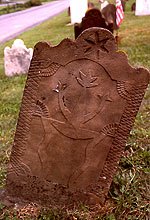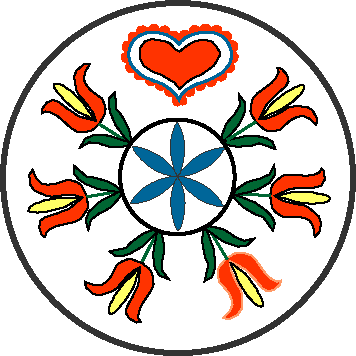Monday, January 6, 2014
Chuck Close
Chuck Close is one of the artists I admire most. He was born July 5, 1940 in Monroe, WA and is an American painter. He studied art at the University of Seattle (1958-62) and received his B.A. He moved to NYC and began a long career in of painting. I introduce him to my 4th grade students either when we are doing portraits or studying Georges Seurat and pointillism.
He achieved fame as a photorealist, through his massive-scale portraits. But after a catastrophic spinal artery collapse in 1988, he was left severely paralyzed. But he worked through his disability to create a whole new way of painting.
His condition meant that, unable to paint in the very detailed styles that made his name, he had to adapt and to develop a new unique approach to portraiture. He has continued to paint and produce large pieces of artwork. I always taught my students about him because he did not let anything get in the way of his creativity.
Photorealist - a genre of painting based on using cameras and photographs to gather visual information and then from this creating a painting that appears to be photographic.
My favorite painting is entitled Fanny/Fingerpainting.
It is a giant portrait (102 x 84 x 2 1/2 in.) and was created in 1985. It depicts Chuck’s wife’s late grandmother, Fanny. The oil on canvas artwork was executed using a technique developed by Close himself. This involved the direct application of pigment to a surface, with his fingerprints. By adjusting the amount of pigment used and the pressure applied on the canvas with his fingers, he managed to capture every crack and crevice of the subject’s face, just like a high-definition silver-toned photograph. It is in the contemporary section of the National Gallery of Art in Washington, DC.
Do you think you could do a finger painting that looks like a photograph?
Or make a painting using a grid and just paint two or three colors in each square to create a portrait?
Tuesday, February 26, 2013
5th Grade Pop Artists
Both Jan.and Feb. are good months to introduce Pop Art to your students.
Click on POP Art to learn more about this art period.
*******************************************************************************
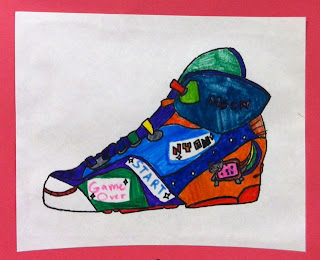
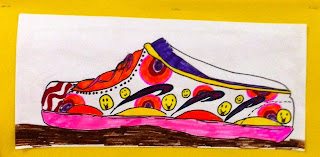 ************************************************************************************
I have tried many different Pop Art projects over the years and finally decided to do a different Pop Art project in each section of my 5th grades. That way when the art show comes in the Spring, I have quite a variety of Pop Art projects to display. I do introduce all my classes to at least 6 different Pop artists. Each class then concentrates on a specific one.
************************************************************************************
I have tried many different Pop Art projects over the years and finally decided to do a different Pop Art project in each section of my 5th grades. That way when the art show comes in the Spring, I have quite a variety of Pop Art projects to display. I do introduce all my classes to at least 6 different Pop artists. Each class then concentrates on a specific one.
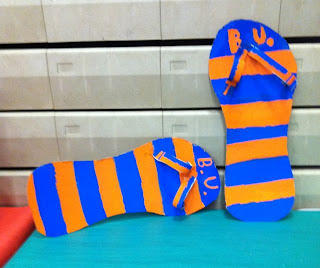 *******************************************************************************
Claes Oldenberg - Angry Birds and large pieces of food
*******************************************************************************
*******************************************************************************
Claes Oldenberg - Angry Birds and large pieces of food
*******************************************************************************
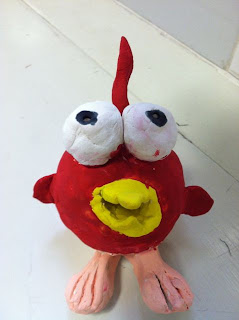
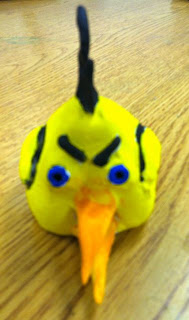
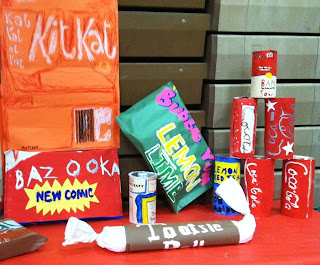 Click on Claes Oldenberg to learn more about him.
*******************************************************************************
Andy Warhol and Roy Lichtenstein - technology
*******************************************************************************
This is where I like to introduce technology. We use Photobooth and a website to create our POP Art projects in the style of Andy Warhol. Click on Andy Warhol to learn more about this very famous POP artist. We also use Photobooth to create a "Roy Lichtenstein" comic composition. Want to know more about this artist? Click on Roy Lichtenstein now.
*******************************************************************************
Click on Claes Oldenberg to learn more about him.
*******************************************************************************
Andy Warhol and Roy Lichtenstein - technology
*******************************************************************************
This is where I like to introduce technology. We use Photobooth and a website to create our POP Art projects in the style of Andy Warhol. Click on Andy Warhol to learn more about this very famous POP artist. We also use Photobooth to create a "Roy Lichtenstein" comic composition. Want to know more about this artist? Click on Roy Lichtenstein now.
*******************************************************************************
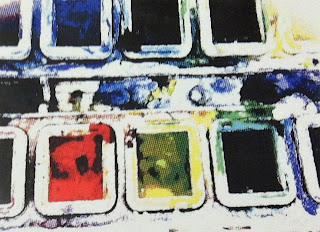
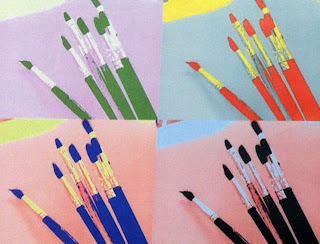 *******************************************************************************
Robert Indiana - Valentine's Day works right into the project
*******************************************************************************
There are so many projects to consider just using a heart shape!
*******************************************************************************
Robert Indiana - Valentine's Day works right into the project
*******************************************************************************
There are so many projects to consider just using a heart shape!
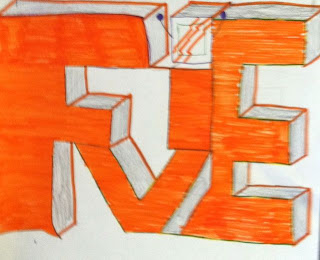
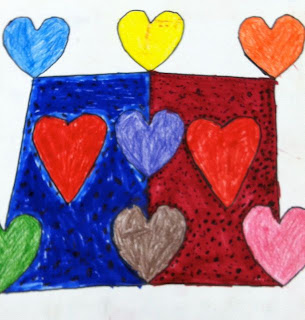 For more information click on Robert Indiana.
********************************************************************************
Jasper Johns - Who doesn't like the flag?
********************************************************************************
Targets, Flags and Numbers are great inspirations!
For more information click on Robert Indiana.
********************************************************************************
Jasper Johns - Who doesn't like the flag?
********************************************************************************
Targets, Flags and Numbers are great inspirations!

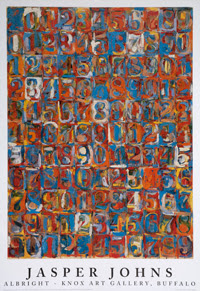 ********************************************************************************
Keith Haring - My students really related to his shapes
********************************************************************************
********************************************************************************
Keith Haring - My students really related to his shapes
********************************************************************************
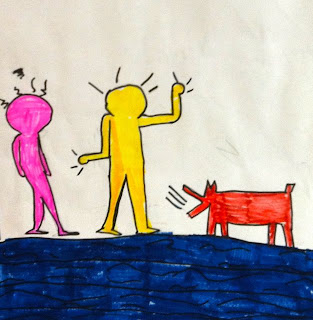
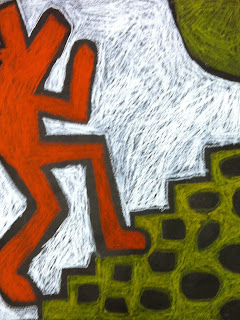 Click on Keith Haring to learn more about his life and his art work.
********************************************************************************
Wayne Thiebaud - Desserts
********************************************************************************
Click on Keith Haring to learn more about his life and his art work.
********************************************************************************
Wayne Thiebaud - Desserts
********************************************************************************
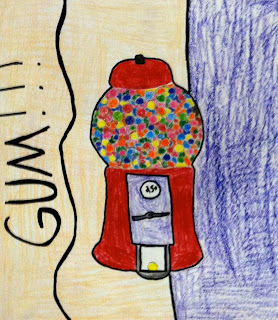
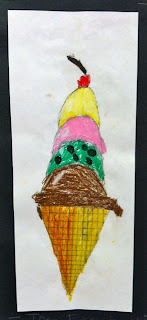 My students loved creating a dessert of their choice. If you want to learn more about Wayne Thiebaud just click on his name.
After reading about these Pop artists, which two were from Pennsylvania?
My students loved creating a dessert of their choice. If you want to learn more about Wayne Thiebaud just click on his name.
After reading about these Pop artists, which two were from Pennsylvania?

 ************************************************************************************
I have tried many different Pop Art projects over the years and finally decided to do a different Pop Art project in each section of my 5th grades. That way when the art show comes in the Spring, I have quite a variety of Pop Art projects to display. I do introduce all my classes to at least 6 different Pop artists. Each class then concentrates on a specific one.
************************************************************************************
I have tried many different Pop Art projects over the years and finally decided to do a different Pop Art project in each section of my 5th grades. That way when the art show comes in the Spring, I have quite a variety of Pop Art projects to display. I do introduce all my classes to at least 6 different Pop artists. Each class then concentrates on a specific one.
 *******************************************************************************
Claes Oldenberg - Angry Birds and large pieces of food
*******************************************************************************
*******************************************************************************
Claes Oldenberg - Angry Birds and large pieces of food
*******************************************************************************


 Click on Claes Oldenberg to learn more about him.
*******************************************************************************
Andy Warhol and Roy Lichtenstein - technology
*******************************************************************************
This is where I like to introduce technology. We use Photobooth and a website to create our POP Art projects in the style of Andy Warhol. Click on Andy Warhol to learn more about this very famous POP artist. We also use Photobooth to create a "Roy Lichtenstein" comic composition. Want to know more about this artist? Click on Roy Lichtenstein now.
*******************************************************************************
Click on Claes Oldenberg to learn more about him.
*******************************************************************************
Andy Warhol and Roy Lichtenstein - technology
*******************************************************************************
This is where I like to introduce technology. We use Photobooth and a website to create our POP Art projects in the style of Andy Warhol. Click on Andy Warhol to learn more about this very famous POP artist. We also use Photobooth to create a "Roy Lichtenstein" comic composition. Want to know more about this artist? Click on Roy Lichtenstein now.
*******************************************************************************

 *******************************************************************************
Robert Indiana - Valentine's Day works right into the project
*******************************************************************************
There are so many projects to consider just using a heart shape!
*******************************************************************************
Robert Indiana - Valentine's Day works right into the project
*******************************************************************************
There are so many projects to consider just using a heart shape!

 For more information click on Robert Indiana.
********************************************************************************
Jasper Johns - Who doesn't like the flag?
********************************************************************************
Targets, Flags and Numbers are great inspirations!
For more information click on Robert Indiana.
********************************************************************************
Jasper Johns - Who doesn't like the flag?
********************************************************************************
Targets, Flags and Numbers are great inspirations!

 ********************************************************************************
Keith Haring - My students really related to his shapes
********************************************************************************
********************************************************************************
Keith Haring - My students really related to his shapes
********************************************************************************

 Click on Keith Haring to learn more about his life and his art work.
********************************************************************************
Wayne Thiebaud - Desserts
********************************************************************************
Click on Keith Haring to learn more about his life and his art work.
********************************************************************************
Wayne Thiebaud - Desserts
********************************************************************************

 My students loved creating a dessert of their choice. If you want to learn more about Wayne Thiebaud just click on his name.
After reading about these Pop artists, which two were from Pennsylvania?
My students loved creating a dessert of their choice. If you want to learn more about Wayne Thiebaud just click on his name.
After reading about these Pop artists, which two were from Pennsylvania?
Monday, December 31, 2012
I love Pinterest!
It has helped me so much as an art teacher! As a visual person, seeing pictures and ideas on the internet that I can pin for future reference is absolutely wonderful. As 2012 comes to a close I am sharing my Pinterest Art Education Board with you.
***********************************************************************
http://pinterest.com/klwlovesart/art-education/
***********************************************************************
***********************************************************************
Hope everyone who has shared their ideas with me via Pinterest helps you when looking for an art lesson idea!
Thursday, November 29, 2012
Charley Harper
Charley Harper was born August 4th, 1922 and died on June 10, 2007. He spent his adult life in Cincinnati and is considered an American Modernist artist. His artwork is made up of highly stylized wildlife prints, posters and book illustrations.
Charley Harper had a unique way of looking at nature. His prints of birds, especially cardinals reveal simple geometric shapes.
He was a conservationist as well as an artist. Harper’s wildlife also showed his sense of humor. He was an American artist who grew up on a West Virginia farm and developed an early love of animals. Below you can see a video of some of Harper's cardinals. You can also introduce him to your students while the video is playing.
He graduated from the Cincinnati Art Academy and taught there for many years. I think his artwork is flat, hard-edged, and simple, which is why young students react to the playfulness in his artwork. Below are some examples done by my KDG. students.
Saturday, September 29, 2012
The Harvest Moon - a 4th grade batik
I have done this lesson plan for several years and always get wonderful results. It has become one of my students' favorite projects. I do this in 4th grade once the leaves have started to change their colors.
Here is the lesson plan.
Session 1:
I introduce organic and geometric during the first time we meet. After we discuss the essential question (see lesson plan), we discuss different organic and geometric shapes and forms. We discuss autumn and leaves.
I pass out white drawing paper, pencils, leaves I have collected from my yard, and rolls of masking tape.
I ask the students to drop the roll of masking tape onto their paper. Wherever it lands, they trace it. We discuss that although it is a geometric form, we are going to use it as an organic form – the Harvest Moon.
The students then drop different leaves onto their paper tracing each one. They should have at least three, but may have more. If the leaf falls partially off the paper, then they just trace the part that is on their composition.
Next each student adds the veins on the leaves.
I pass out baskets of crayons for each table to share.
I demonstrate how I want the students to color their leaves.
I ask them to press very hard on the crayon and I also ask them not to color the veins of the leaves. We also color the stems. The students may use any colors but BLACK.
The last thing we do is write our names on the back in crayon and I collect these as they clean up before leaving.
Session 2:
We discuss batiks and pysanky eggs during this session.
I show them two short videos from YouTube (listed on my lesson plan) – one on making batiks and one on making pysanky eggs. We discuss the similarities and differences between the two techniques.
I also show them several examples that we pass around the room. I found out the hard way, it might be a good idea to show the pysanky egg inside a clear plastic container.
Once each student is finished coloring his or her Harvest Moon composition, it is time to turn it into a paper batik.
I demonstrate the steps and write them on my agenda board.
After each student puts on a paint shirt, takes a deskcover and gets his or her project back, check to be sure coloring is complete.
*********************************************************************************
Step 1: Take project to the sink; crumble it up into a ball about the size of a baseball.
Step 2: Wet it under the sink – no longer than 5 seconds.
Step 3: Shake off excess water into sink.
Step 4: Take deskcover and open and spread out project onto it.
Step 5: Get black ink or paint (thinned tempera), a paintbrush and a clean damp sponge.
Step 6: Paint entire surface with black paint – cover completely.
Step 7: Put on plastic throw away gloves (like they use in food service).
Step 8: This is the most important part – take the damp sponge and start lifting the black paint off the project. The sponge may need to be cleaned and rinsed several times.
Step 9: The little cracks we made by crumbling the paper create the effect of a batik.
Step 10: Carry project to drying rack on deskcover. Throw away gloves and clean up desk or table area.
The reason we wrote our names in crayon last time is because the wax in the crayon will resist the black paint as it soaks through the paper to the back.
I usually iron the projects when they are dry.
Last year we drew pictures on a piece of paper, put a piece of wax paper on top of it, and then a piece of muslin on top of that. We could see our designs through the muslin and wax paper. We traced our designs on the muslin with Elmer’s blue gel glue. The next class when the glue was dry, we painted the muslin with acrylic paints. I took the projects and soaked in warm water for about 30 minutes and then scrubbed off the blue gel glue with a hand brush. When these dried, I ironed them. They really looked like a batik.
**********************************************************************************
All examples here were created by 4th grade students.
Monday, August 27, 2012
Organizing the Art Room
I have been thinking about what art lesson to share this month and I decided since it is the beginning of a new school year; I would share a tip instead.
*******************************************************************
My classroom has 6 tables with 4 students at each table.
You could do this with individual desks too (by grouping four together).
Each table has a name - your choice - I use art periods with a poster of each period by each of my 6 tables.
The students learn very quickly what art period is their table.
********************************************************************
I put little round stickers on each corner of each table.
I bought a pack of dots at Wal-Mart.
They are Hot Pink, Orange, Yellow and Bright Green.
I have a chart posted on the wall with job assignments - Supplies, Collector, Clean Up and Helper.
I use Velcro strips on the backs of the 4 rectangles on my chart.
********************************************************************
I change the chart the beginning of every cycle.
I never worry about missing a student or calling on one too often.
My chart solves that.
The Helper job does any jobs if someone else is absent or we just need extra help with one of the other jobs.
********************************************************************
Supplies - Pass out all supplies for the lesson.
Collector - Collect all supplies, materials, and tools.
Clean Up - Clean up table, floor, scraps, etc.
Helper - Do job of absent person or help one of other three.
********************************************************************
I would like to take credit for this idea, but like most, it was passed down to me from a former art teacher I worked with for many years.
Thank you Diane!
It has served me well for more years than I care to say.
Saturday, June 30, 2012
Printmaking and Pattern in KDG.
STILL - LIFE: Printmaking Patterns and 3D
*****************************************************************************
In KDG. we have art class for 60 minutes.
I have one sink for 16 o 22 students.
This project requires 2 class periods to complete.
********************************************************************************
We discuss different types of compositions throughout the year. This is one lesson I use when discussing STILL LIFE. You can choose any artist you would like. I used Cezanne and Van Gogh.
*********************************************************************************
We also discussed printmaking and what exactly it was. I usually show them some different types of printmaking and we talk about any experiences they may have had using printmaking techniques.
First we used rounded shaped objects to print 4 or 5 flower shapes on different paper scraps. I use tempera paint, printmaking ink, or printing pads, depending on which I have at the time.
******************************************************************************
While they were drying and we were cleaning up our printmaking areas, we then took a rectangle of color (precut by the teacher) and created patterns on it (we had discussed patterns earlier in the year). The students pick from different piles of color.
The last thing we do on Day 1 is to pick out a background piece of paper, put our names on the back and make a patterned table or tablecloth.
**********************************************************************************
On day 2, we cut out our flower shapes.
We glue down the colored rectangle so it makes a 3D shape and curves out from the paper.
On the paper we add stems, leaves, etc. to our compositions. The students may add any ideas they would like to create.
*********************************************************************************
If we still have some time left, we glue our project down to a larger piece of paper to create a border. We decorate it.
Subscribe to:
Comments (Atom)
































